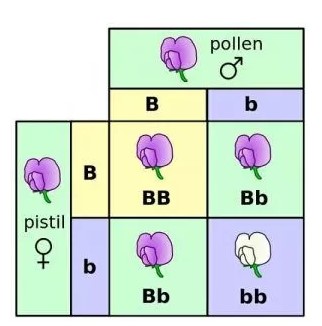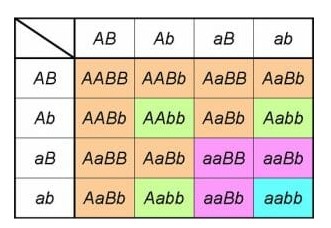In a genotypic ratio, the number of times a characteristic of an organism will be seen in its offspring when certain genes are crossed. As shown in Figure 1, the Punnett square method and a monohybrid cross are more easily understood.

Each gene in animals and plants has two alleles or variations, one from each parent. By using the Punnett square grid, all phenotypic variations for offspring that are derived from the mixing of male and female gametes (crossing) can be predicted.
Allele pairs for males and females are plotted separately on a grid. As a result, each square in the grid is filled in with allele combinations from the parents.
The genotypic ratio can be found by counting the number of times each combination appears in the grid, starting from the upper left square. In Figure 1 below, only one trait, flower color, is crossed across alleles.

In Figure 2, larger Punnett squares are used to calculate genotypic ratios for more than one trait.
